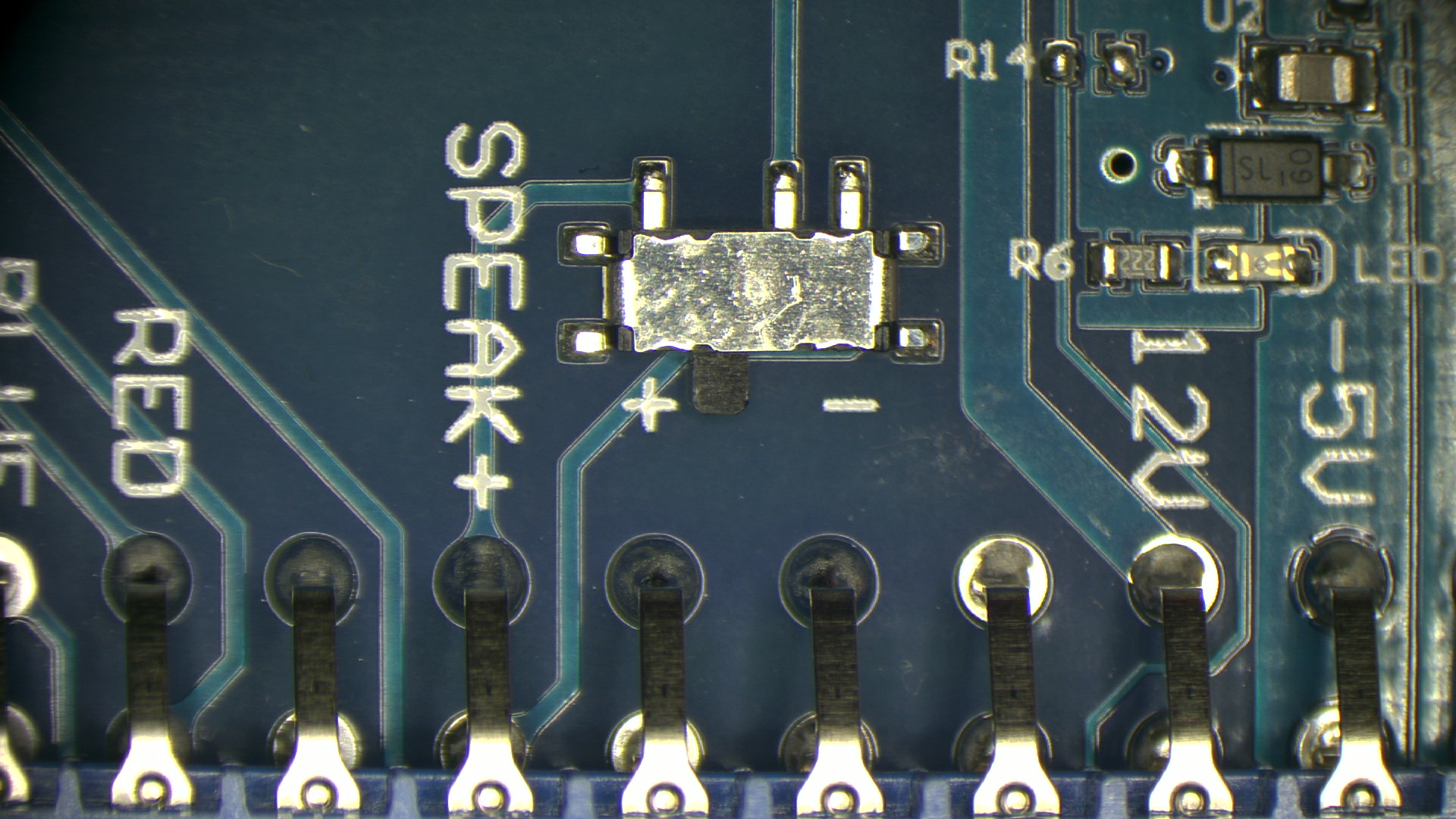Audio
Audio output is AC coupled, impedance about 510 ohms, and 0.5x the level of the Jamma input. In English, this means that the RCA connectors on the Jammafier are ‘line out’ and suitable for an external amplifier. Since most amplifiers are stereo, the Jammafier has 2 outputs so you don’t have to fiddle with a ‘Y-cable’ to get sound in both speakers.
Details for the technically inclined
Jamma boards have onboard amplifiers designed for physical loudspeakers via a positive and a negative terminal, which is unfortunately not “line out” with more oomphf.
Should you simply connect this to an external amplifier, while being careful to turn the volume down to get “line level” – you will short out the negative audio terminal on the Jamma board, which is bad, and will likely destroy or overheat the amplifier chip on your board.
Some games cheap out and use GND for “speaker -“, but it’s not all that common.
This table shows what’s been observed in the wild:
| Pin | Speaker + | Speaker – |
| Most boards | Speaker + | Speaker – |
| Some boards | Speaker + | GND |
| Very few boards | GND | Speaker + |
The Jammafier use Speaker+ by default. Should you encounter one of the very few boards that have GND on the Speaker+ pin (resulting in silence via the Jammafier), you can flip a switch on the Jammafier to use Speaker- instead.

Namco Issues
The Namco adapter has a PCB bug that is factory fixed with green jumper wires, but the resulting circuit is a little odd.
Riverservice RS Issues
The Riverservice adapter does not (properly) attenuate audio, which is not a big issue as long as you dial the the volume down on your board. The AC coupling capacitor on the one I have has a low capacitance, resulting in bass frequencies being blocked.
Konami
The Konami board does a lot right, and the Jammafier is heavily inspired by this design.
Last Updated on 2022-09-11 by admin
